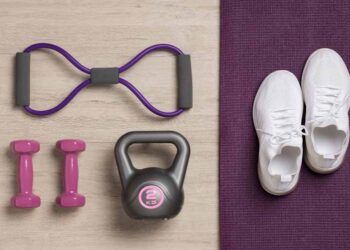Table of Contents
1 Introduction
Losing fat shouldn’t feel like a mystery—or a punishment. Yet, for millions of people, the journey to fat loss is filled with frustration, confusion, and constant setbacks. From restrictive crash diets to overhyped workout plans that promise “instant results,” many fall into the same cycle: lose some weight, regain it, and feel more discouraged than before.
Why does this keep happening?
Because most fat loss advice is based on trends—not science. The truth is, sustainable fat loss isn’t about depriving your body or pushing it to extremes. It’s about understanding how your metabolism works, what your body actually needs, and how to create healthy habits that last.
If you’re tired of conflicting information and you’re looking for safe, science-backed strategies for fat loss, this guide is for you. We’ll walk through 7 proven methods, all rooted in real research, that will help you burn fat effectively, boost your energy, and build a routine that fits your lifestyle.
Whether you’re a beginner trying to start your wellness journey or someone who’s tried every diet without long-term success, these strategies will help you cut through the noise and take smart, sustainable steps forward.
Ready to break free from the cycle of false promises and temporary fixes? These science-based fat loss strategies are exactly what your body—and your mindset—need.
2 Focus on a Caloric Deficit Without Starvation
One of the most fundamental principles of fat loss is maintaining a caloric deficit—consuming fewer calories than your body needs to maintain its current weight. But despite its simplicity, this concept is often misunderstood or applied in extreme, unsustainable ways. Many people associate a caloric deficit with crash dieting, hunger, and low energy. In reality, when done correctly, a caloric deficit for fat loss can be safe, manageable, and even empowering.
Instead of starving the body, the goal is to create a moderate caloric deficit that allows fat burning while preserving muscle mass and supporting daily function. This means focusing on nutrient-dense foods that are low in calories but high in volume and satisfaction—such as vegetables, lean proteins, and healthy fats. It also means avoiding ultra-restrictive plans that eliminate entire food groups, as these often lead to binge eating, fatigue, and metabolic slowdown.
To create a sustainable caloric deficit, start by understanding your Total Daily Energy Expenditure (TDEE) and reduce intake by 10–20% depending on your activity level. Combine this with consistent movement and hydration, and you’ll be creating the ideal environment for steady, long-term fat loss—without starvation or burnout.
When used strategically, a caloric deficit becomes a tool for transformation, not deprivation. It’s about fueling your body smartly, not starving it.
3 Prioritize Protein Intake to Boost Fat Burning
When it comes to effective and sustainable fat loss, increasing your protein intake is one of the most powerful yet overlooked strategies. Protein plays a critical role in preserving lean muscle mass during a caloric deficit, which helps keep your metabolism active even as you lose weight. Without enough protein, the body may break down muscle for energy, slowing down fat-burning efficiency.
High protein intake also enhances satiety, meaning it keeps you feeling full for longer periods and reduces the likelihood of overeating or snacking between meals. This natural appetite control is essential when trying to create a sustainable fat loss routine without constantly battling hunger or cravings.
Additionally, digesting protein requires more energy than fats or carbohydrates—a phenomenon known as the thermic effect of food (TEF). This means your body actually burns more calories processing protein, making it a smart nutrient choice for anyone aiming to improve body composition.
Good sources of protein include eggs, lean meats, fish, tofu, legumes, and high-quality protein powders. Aim to include a source of protein in every meal, especially breakfast, to set a strong metabolic tone for the day. Making protein intake a consistent part of your eating habits supports not just fat loss, but overall health and strength.
4 Improve Insulin Sensitivity Through Smarter Carb Choices
One of the most underrated factors in fat loss is insulin sensitivity—the body’s ability to process carbohydrates effectively without storing them as excess fat. When insulin sensitivity is high, your cells are better able to absorb glucose for energy. But when it’s low, your body is more likely to convert carbs into fat, particularly around the midsection.
Poor insulin sensitivity is often linked to chronically high blood sugar, sedentary behavior, excessive intake of refined carbs, and lack of sleep. To improve it naturally, begin by focusing on complex carbohydrates such as oats, sweet potatoes, legumes, and leafy greens, while reducing your reliance on refined sugars and ultra-processed snacks. Pairing carbs with protein and healthy fats also helps stabilize blood sugar levels and lower insulin spikes.
Timing your carb intake—such as consuming more after workouts—can further support metabolic efficiency. Regular movement, resistance training, and even walking after meals have also been shown to boost insulin sensitivity over time.
For readers who want to explore how metabolism, insulin regulation, and lifestyle habits connect on a deeper level, there are science-based resources that turn these strategies into step-by-step systems. These kinds of guides are designed to help make complex concepts like insulin sensitivity easier to understand—and even easier to apply.
Improving your body’s response to insulin isn’t just helpful for fat loss—it also reduces your risk of type 2 diabetes, energy crashes, and cravings. This strategy forms a strong foundation for long-term wellness and body composition improvements.

💡 Want a deeper dive into how your body burns fat—without the guesswork?
If you’re ready to understand how fat loss really works—beyond trends and quick fixes—there’s a trusted guide built around science, not hype. Learn how metabolism, hormones, and daily habits all come together to support real, lasting results.
This practical resource is ideal for beginners, busy professionals, or anyone tired of the trial-and-error cycle. Backed by research, designed for real life.
5 Build Lean Muscle with Resistance Training
When most people think of fat loss, they immediately focus on cardio. While aerobic exercise certainly plays a role, resistance training is one of the most effective—and underrated—methods for long-term fat burning. Building lean muscle not only tones your body but also increases your resting metabolic rate, meaning you burn more calories even while at rest.
Unlike crash diets that cause muscle loss along with fat, incorporating strength training helps preserve muscle mass during a caloric deficit, which is crucial for sustainable fat loss. More muscle equals more energy demand, making your body more metabolically efficient over time.
You don’t need a gym membership to get started. Bodyweight exercises like squats, push-ups, lunges, and planks are incredibly effective when done consistently. For those with access to weights, compound movements like deadlifts and presses can amplify results even further.
Aim for at least two to three resistance training sessions per week, focusing on progressive overload—gradually increasing intensity, reps, or weight. Combined with the right nutrition and recovery, resistance training transforms your body into a fat-burning machine while supporting posture, strength, and overall vitality.
This strategy doesn’t just shape your physique—it strengthens your metabolism, protects your health, and boosts long-term success.
6 Optimize Sleep and Manage Stress for Hormonal Balance
Fat loss isn’t just about what you eat or how you train—it’s also about how well you rest and recover. In fact, poor sleep and chronic stress are two of the most overlooked obstacles to fat loss, often sabotaging progress even when diet and exercise are on point.
When sleep is insufficient, your body produces more ghrelin (the hunger hormone) and less leptin (the satiety hormone), which leads to increased cravings and reduced willpower. At the same time, stress triggers the release of cortisol, a hormone linked to fat storage, especially around the abdominal area. Elevated cortisol levels can also disrupt blood sugar regulation and muscle recovery—two critical factors for effective fat loss.
To support hormonal balance, aim for 7–9 hours of quality sleep each night. Create a calming evening routine, limit screen time before bed, and keep your sleep environment cool and dark. Managing stress is equally important—try deep breathing, walking, stretching, journaling, or even just taking short breaks throughout your day.
When your body is well-rested and less reactive to stress, it’s more responsive to all your fat loss efforts. You’ll notice better energy, improved digestion, fewer cravings, and a more balanced mood—all of which support consistency and sustainable results.
7 Be Consistent, Not Perfect: Why Habits Matter More Than Willpower
One of the biggest misconceptions in fat loss is that success requires perfection. In reality, what drives long-term results isn’t flawless effort—it’s consistency. Showing up regularly, even with small actions, is far more impactful than going all-in for a few days and then burning out.
Chasing perfection often leads to all-or-nothing thinking: one skipped workout or one unplanned meal turns into a full relapse. But building sustainable habits means allowing room for flexibility and learning. It’s okay to miss a day, to adjust your plan, or to have a treat. What matters most is that you keep moving forward.
Consistency reinforces positive behavior through repetition. The more a healthy habit is repeated—whether it’s meal prepping, drinking more water, or walking daily—the easier it becomes to maintain. Over time, these actions turn into automatic routines that no longer require intense willpower.
Instead of aiming to be perfect, aim to be consistent. Choose progress over pressure. Stay focused on your “why,” track your small wins, and allow your habits to evolve naturally. This mindset shift is what transforms fat loss from a temporary phase into a lasting lifestyle.
8 Track Progress Beyond the Scale to Stay Motivated
When working toward fat loss, many people rely solely on the scale to measure success. But the truth is, the scale doesn’t tell the whole story—and in many cases, it can be misleading. That’s why it’s essential to track progress using multiple, more meaningful indicators.
Fat loss is not just about weight; it’s about body composition, energy levels, confidence, and how your clothes fit. Taking progress photos, tracking body measurements (like waist, hips, and arms), and noting how you feel throughout the day can provide a much clearer picture of real progress. These non-scale victories are often the most encouraging signs that your efforts are working—even when the number on the scale doesn’t move.
Keeping a simple journal or using a habit tracker to record your meals, workouts, mood, and sleep can also reveal patterns that help you stay on track. This kind of mindful tracking helps you notice small improvements, identify what’s working, and make smarter adjustments when needed.
By choosing to track progress in a well-rounded way, you build awareness, maintain motivation, and create a stronger connection with your body. Fat loss becomes less about numbers—and more about growth, strength, and long-term success.
9 Final Thoughts: Sustainable Fat Loss Is Built on Smart, Consistent Choices
Fat loss doesn’t have to be extreme, complicated, or overwhelming. As you’ve seen, sustainable fat loss is the result of small, science-based strategies applied consistently over time. From creating a gentle caloric deficit to improving sleep and stress levels, each habit plays a key role in shaping your body and mindset for lasting change.
Instead of chasing perfection or the next trendy diet, focus on building healthy habits that align with your lifestyle. Choose nutrient-dense foods, move your body in ways you enjoy, and most importantly—stay patient with the process. Real transformation doesn’t happen overnight, but with the right tools and understanding, it does happen.
These 7 fat loss strategies aren’t quick fixes—they’re building blocks for a healthier, stronger you. And the more you practice them, the more effortless they become.
If you’re ready to move from confusion to clarity, take what you’ve learned here and apply it one step at a time. You’ve already started your journey—and that’s something worth celebrating.
Here’s to smarter choices, stronger habits, and a healthier life—built your way, at your pace.













